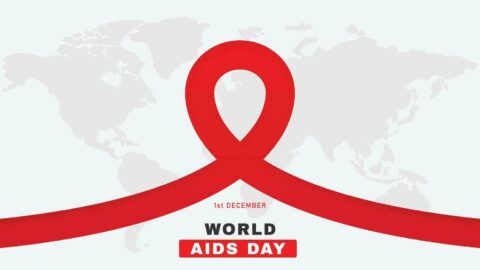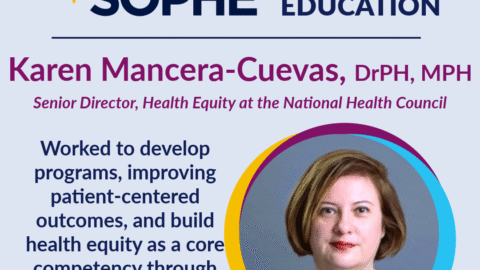It sounds simple – wash your hands and use social distancing. But are such straightforward messages getting through to consumers? Is there evidence of any changes in their behavior?
In less than three weeks our nation has been turned on its axis. Bill Gates, who predicted the dire consequences of a global biological outbreak in a 2015 TED-talk, acknowledged the present apocalypse saying, “We are all awaking each day to a completely new reality.” Individuals, families, and communities are experiencing medical, economic, and psychological distress – including heart-wrenching grief – from an invisible enemy.
To assess Americans’ knowledge, attitudes and behaviors related to the COVID-19, RTI International researchers surveyed more than 1,000 respondents during the week of February 28 through March 2, 2020, with these results:
• Approximately 40% were worried about getting sick with coronavirus;
• 86% had seen, read or heard either a fair amount or a great deal about coronavirus;
• More than 70% percent said they were washing their hands with soap and water more often; and
• About 50% acknowledged using hand sanitizers or disinfectants daily.
The RTI survey also found significant knowledge/behavior deficits among respondents. One-third of those surveyed incorrectly believed that most people infected with COVID-19 will die from it. Many respondents were also mistaken that antibiotics can be used to prevent coronavirus. Only 33% said they were avoiding shaking hands.
As this pandemic unfolds, we’re also learning the impact of media coverage on consumer knowledge and attitudes as well as other behaviors, such as household spending. Nielsen has identified six key consumer behavior thresholds, primarily driven by news cycles since COVID-19 began spreading across the globe. For example, after small quarantines and border closures made the news, consumers had record sales of not only masks and hand sanitizers, but also shelf-stable foods such as dried beans, canned meat, rice, and other pantry items.
Why do consumers respond as they do? According to RTI communication guru, Dr. Brian Southwell, individuals’ past mental models of disease shape the way they view and react to new outbreaks such as COVID-19. In this case, many individuals view COVID-19 as a flu, when this disease has more complex and serious consequences, especially for the elderly and those with pre-existing immune compromised conditions.
But other dynamics also impact the receipt of our coronavirus prevention messages by the public:
• Information Overload/Underload – Headlines about the novel virus saturate the 24/7 landscape through radio, television, and social media. The blitz of COVID-19 information permeating the airwaves and social media are overwhelming. Some posts are speculative, unsubstantiated, and anecdotal or contradict scientific authorities. In other cases, rural or vulnerable populations with limited internet access may hinder seeking out scientific authoritative sources.
• Complexity of Issues/Changing Dynamics – COVID-19 is a new virus, with scientists and public health officials scrambling to understand its epidemiology, i.e. the host, agent, and environment of viral transmission. We are learning as we go. Thus, lack of certainty and unpredictability of the disease makes it hard for consumers to cope and relieve their anxieties. For example, several weeks ago, consumers were told not to wear masks unless they were ill; now CDC advises everyone to wear masks as we may be asymptomatic carriers. And, just today, we’ve learned that even family pets may be COVID-19 carriers.
• Quick Fix Mentality – The desire for a magic potion or quick fix has pervaded our society for centuries. With COVID-19, scientists predict it may take 12-18 months before a vaccine can be widely available. In the interim, consumers are tempted with unproven preventive measures such as breathing smoke from fire or consuming elixirs like sesame oil. According to RTI, 37% percent of their survey respondents were unsure or incorrectly believed that eating garlic could help prevent coronavirus.
• Lack of Health Literacy – Some 36% of all-American adults have basic health literacy, or below basic health literacy skills. Adults 65 years and older – those at higher-risk for contracting COVID-19 – also have lower average health literacy than adults in younger age groups. Scientific terms used in daily federal/state briefings such as “herd immunity,” “apex of the outbreak” and “mitigation steps” are not household terms. Some social psychologists also question appropriateness of the term “social distancing,” which they argue is counterintuitive to individuals’ fundamental need for connections and could lead to depression or mental health issues. “Spatial distancing” is their preferred terminology, especially for some countries and cultures in which people are accustomed to relying on each other when times get tough. Unfortunately, in this emergency, we’ve not had time for standard message testing or focus groups.
Clearly, we have much to learn about effective messages, channels and impacts of health communication on consumers related to COVID-19. To develop a repository of survey research related to the pandemic, National Academies of Science, Engineering and Medicine, and the National Science Foundation launched the Societal Experts Action Network (SEAN) on April 3. This open-access data archive will house probability-based public opinion surveys on COVID-19 to share important findings with researchers, policymakers and the public. RTI plans to continue surveying Americans over time to carefully track consumer knowledge, attitudes, and behaviors.
Only time will tell if our COVID-19 communications are successful and lessons to be applied for the next risk communication emergency.
Elaine Auld, MPH, MCHES®
SOPHE CEO



